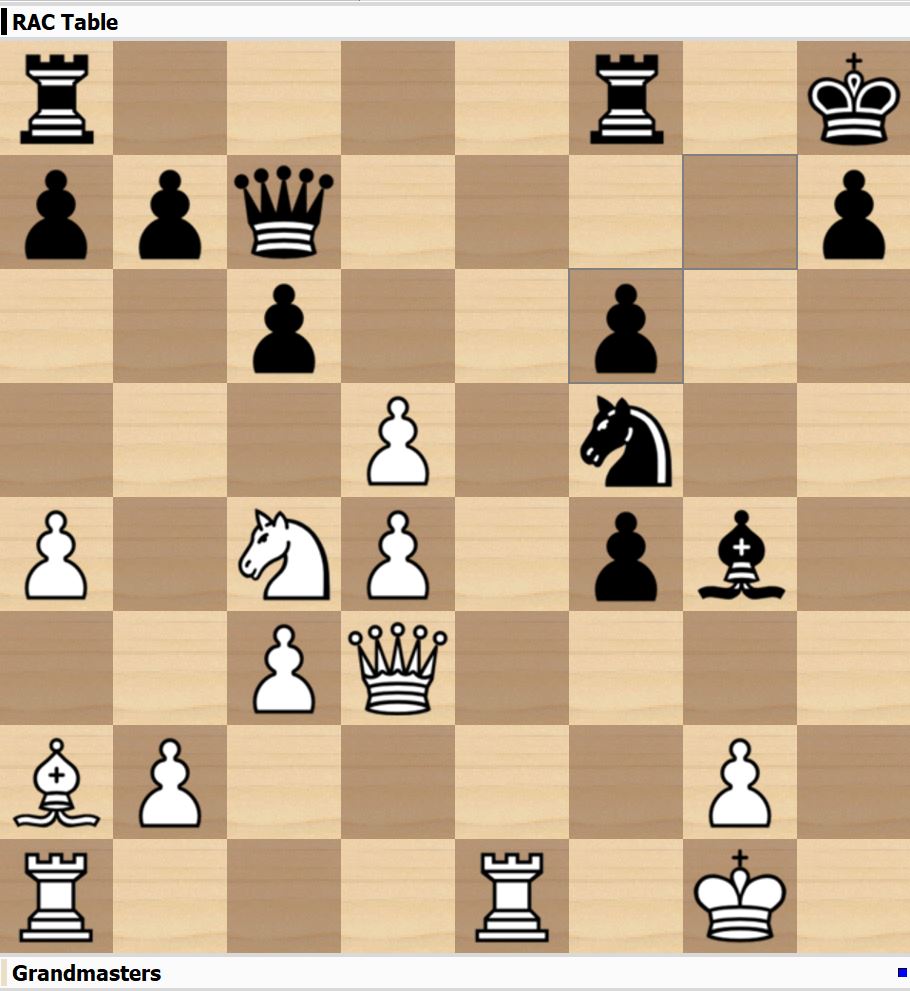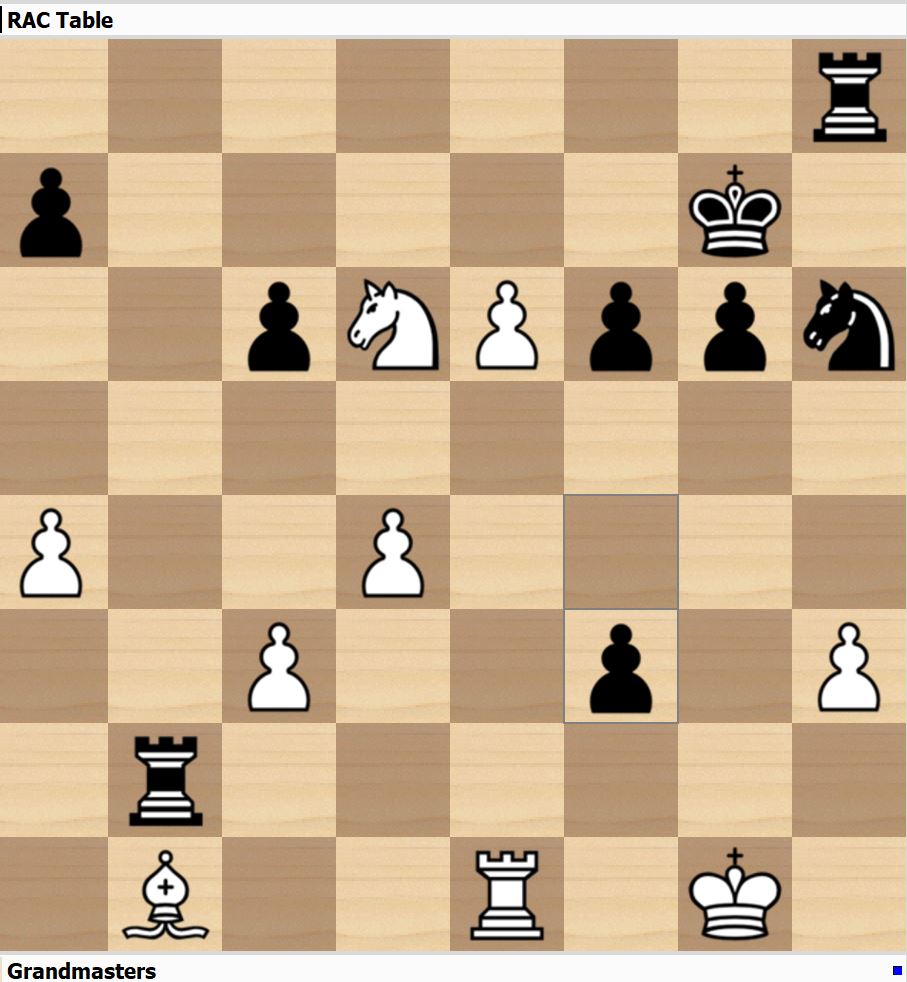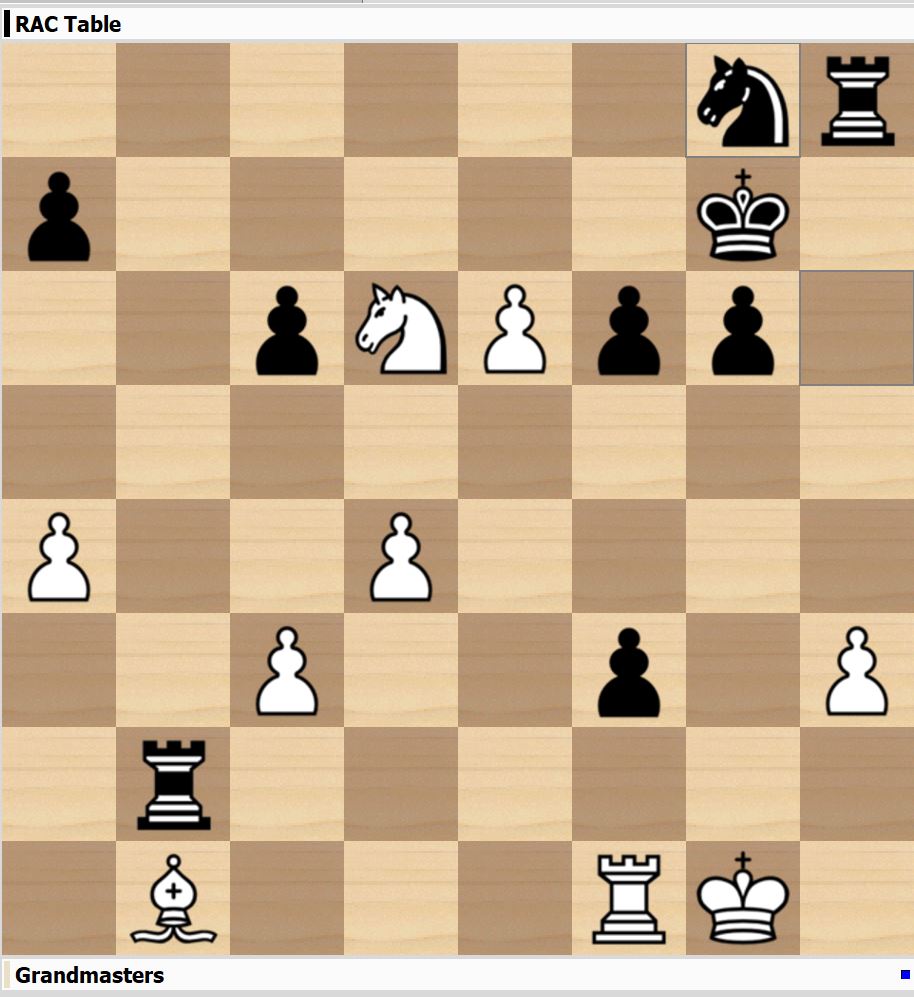Once again, the last chess event of the year for me was the London Classic dinner at Simpsons-in-the-Strand. It’s the traditional joyful end to the London Chess Classic, by far the most prestigious and fun event in the British Chess calendar. From the start, the London Chess Classic has aspired to be a festival of chess rather than just another super-grandmaster tournament, and organiser Malcom Pein has done amazing work to fashion the London Chess Classic into an inclusive event that makes everyone – from schoolchildren to pioneers of business – feel part of a wonderful celebration of chess. For example, this year strong top British grandmasters Luke McShane and Daniel King gave free masterclasses to schoolchildren, while the Pro-Biz event – at which amateurs from the world of business team up with top grandmasters, playing alternate moves in rapid games – was a great success displaying an extremely high level of play. The latter event was hosted by DeepMind – creators of AlphaZero – at their amazing office in St. Pancras.
The closing dinner features a few speeches – I gave one this year on the amazing AlphaZero game “All-in-Defence” (https://www.youtube.com/watch?v=2-wFUdvKTVQ&t=35s) – a raffle, bidding for unique chess items (all for charity), gorgeous food and wine and… some chess! Each dinner table (about 20 in total) is given a chessboard and after the first course, the grandmasters from the top table (in this case, Fabiano Caruana, Hikaru Nakamura, Maxime Vachier-Lagrave and Levon Aronian from the Grand Chess Tour final and Michael Adams, Gawain Jones, David Howell and Luke McShane from the British Knockout Championship) play a simultaneous against the other dinner tables. It sounds like an uneven contest, and it is… but not the way you would think! Wine is flowing freely, each table is reinforced by a strong player (I was an honorary RAC member for the evening while helping the RAC table), the grandmasters are only half-paying attention and it’s pretty unusual for a grandmaster to play a couple of moves in succession so not much hope for long-term planning!
The following game is typical of the chess played. The RAC table was composed of Natasha Regan, Trevor Dunmore, Roger Emerson, Nigel White, Nigel Povah, Terry Chapman (also an honorary member for the night!) and me. We had the Black pieces. A video of this article is also available at https://www.youtube.com/watch?v=85zvv0d5veo. As always a playable version of this game is available at http://cloudserver.chessbase.com/MTIyMTYx/replay.html
Grandmasters – RAC Table
London Classic Dinner Simpsons, 18.12.2018
1.e4 [Levon Aronian came to our board and made the first move for the Grandmasters.]
1…e5 2.Bc4 Nf6 3.d3 c6 4.Nf3 Be7 [At this point, Luke McShane was at our table. We sportingly warned him that there was a tactic in the position!]
5.0–0 [5.Nxe5 Qa5+ costs White a piece.]
5…d6 6.c3 0–0 7.Re1 Nbd7 8.a4 Kh8

[The players were coming along at short intervals during the opening phase which led to a slight spot of panic on our table. Natasha was adamant that the plan of …Kh8, …Ng8 and …f5 always worked and her conviction carried the rest of the table!]
9.Ba2 [David Howell looked a little confused after 8…Kh8 and responded by getting the bishop out of the range of the advance …d6–d5.]
9…Ng8 10.d4 [With the centre fluid, …f5 was not looking particularly attractive so it was time to apply the brakes.]
10…Qc7 11.Na3 Ndf6 12.Ng5 [Luke McShane’s move – I wonder whether he had missed the cunning second point to 8…Kh8 and 9…Ng8!]
12…Nh6 [The knight defends f7! Of course, if we hadn’t played …Kh8 and …Ng8 in the first place, then f7 would have been defended already and …Nh6 wouldn’t have been necessary!]
13.f4 [Fabiano Caruana’s move. It looks scary, but strangely enough – as often happens in simultaneous displays – Black’s strangely-placed pieces seem to be reasonably-placed to deal with it!]
13…Bg4 14.Qd3 [Levon Aronian’s instant reply.]
14…Nh5 [This move is awkward to deal with: the combination of knight on g5, pawn on f4 and queen on d3 gives Black the vital resource of …Nf4 at crucial moments. Moreover, White’s rook would much rather be on f1 than e1 while White’s queenside pieces are playing little part in the struggle for now.]
15.h3
[15.f5

is White’s most desirable idea, “punishing” Black for not breaking the wall of White pawns by capturing on f4 and trapping Black’s light-squared bishop on g4. However, White’s position is quite shaky. 15…Nf4 16.Bxf4 exf4 17.h4 (17.Nf3 d5 was the default idea hitting at e4 and thus undermining White’s support of f5. My engine thinks that Black even has time to prepare it further with 17…Rad8.) 17…d5 18.exd5 Nxf5

was the ambitious continuation I was examining while waiting for the grandmasters to come around. (18…Bxf5 19.Qf3 looked less clear) 19.Nc4 (19.Re5 g6 20.Rf1 was another idea that appealed to me: if Black’s pawn on f4 disappears, then a lot of the danger to White’s king does too. However, White’s pieces are too exposed to be able to realise this tactically. 20…Nxh4 21.Rxf4 Bf5 22.Qg3 Bxg5 23.Qxg5 f6 wins) 19…Bxg5 20.hxg5 f6 (20…Qd8 was another idea I had spotted, going after the g5–pawn after which Black should develop some kingside play. 21.dxc6 bxc6 (21…Qxg5 22.cxb7 Rab8 23.Re5 looked awkward with the threat of Nd6.) 22.Ne5 Qxg5 23.Nxf7+ Rxf7 24.Bxf7 Ng3 is balanced according to my engine: Black’s threat of …Qh4–h1+–h4 will be be enough to keep Black afloat. (24…f3 25.Qe4 Threatening Qe8+ (25.Re5 Rf8 (25…Bh5 26.Qc2 is the clever idea) 26.Rf1 threatening Rxf3 was the correct defence I thought, but it seems wrong unfortunately! 26…g6 The power of this move escaped me completely. 27.Be6 fxg2 This simple idea is awful for White. 28.Rf2 Qc1+ 29.Kxg2 Nh4+ 30.Kg3 Qg1+) 25…h6 (25…Rf8 26.Qe8) 26.Qxc6 followed by Re8 is the brutal refutation!) 25.Qa6 Qh6 26.Qxa7 Rg8 27.Bxg8 Qh1+ 28.Kf2 Qh6 29.Kg1 is the engine repetition.) 21.gxf6 gxf6

was my idea, followed by bringing the queen and rook to the g-file. My engine is very positive too!
15.fxe5 dxe5 followed by a move like 16.Nc4 or 16.Rf1 or 16.h3 looked like sensible choices though it all looked quite acceptable for Black. However, Gawain Jones had the difficult task of making White’s 15th move and he plumped for a risky idea.]
15…Nxf4 16.Bxf4 exf4 17.Nxh7 [Hikaru Nakamura’s hand hung in the air for a few seconds as he played this move, hesitating between 17.Nxf7+ and 17.Nxh7. Eventually he went for]
17…Kxh7 18.hxg4 Bh4

[Strangely enough, Black’s position is suddenly very promising, based around a simple plan: …Qe7, …Bg3 and …Qh4. Black can also add extra firepower on the h-file with …g6, …Kg7 and …Rh8 if necessary. David Howell came around, looked slightly shocked at the mess that had taken hold of the position and played more sharply still.]
19.Qh3 Bxe1 20.Rxe1 Qe7 [This is the key move, preventing g4–g5. White finds it very hard to create counterplay as 21.Qh5 can be met by 21…g6.]
21.Nc4 Rad8 22.Bb1 g6 23.e5 Kg7 [Preparing ….Rh8.]
24.g5 Qxg5 25.Nxd6 Rh8 26.Ne4 Qg4 27.Nd6 Qxh3 28.gxh3 f6 [Perhaps a little risky, but it worked out well!]
29.Nxb7 Rb8 30.Nd6 Rxb2 31.e6 f3

[Terry Chapman’s suggestion, and a very strong move!]
32.Rf1 [32.e7 f2+]
32…Ng8

[The king’s knight is the star again! This wonderful suggestion from our table prevents e6–e7 and threatens 33…Rg2+ 34.Kh1 Rxh3+ mate!]
33.Bf5 [Desperation]
[33.Rxf3 Rxb1+]
33…Ne7 34.Rxf3 [34.Bg4 Rg2+ 35.Kh1 Rxg4 is a typical trick]
34…Nxf5 35.Nxf5+ gxf5
0–1




How did you decide the move when there was 2 equally valid suggestions? Great game Mathew and as usual, great analysis.
Thanks Carlton! In general, everyone had phases where they were taking the lead. Natasha had the opening, I had that tricky phase around …Nh5 and then Terry Chapman and Nigel Povah came through with some really good suggestions at the end. Team effort!
Thanks to you Matthew Sadler for your selflesness in providing such educative insights carved out of this thoroughly enjoyable game. Keep up the good work!